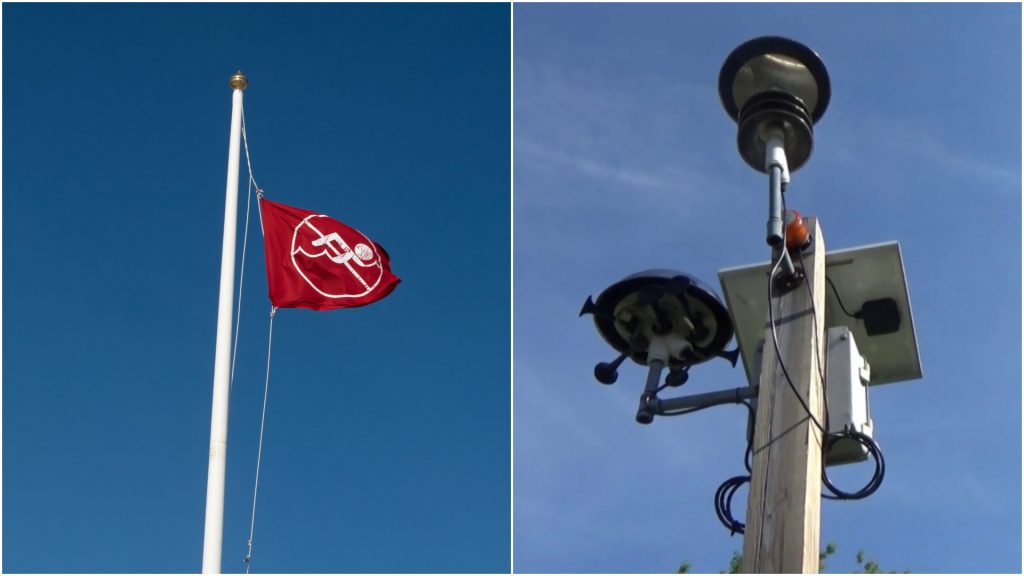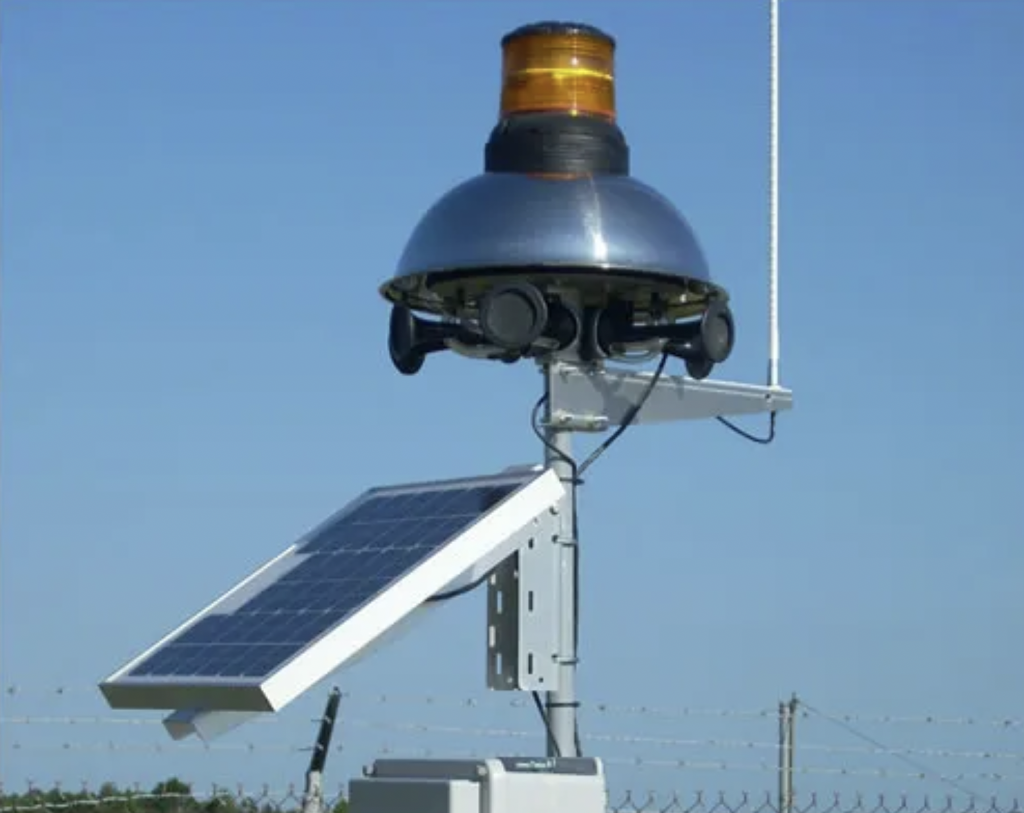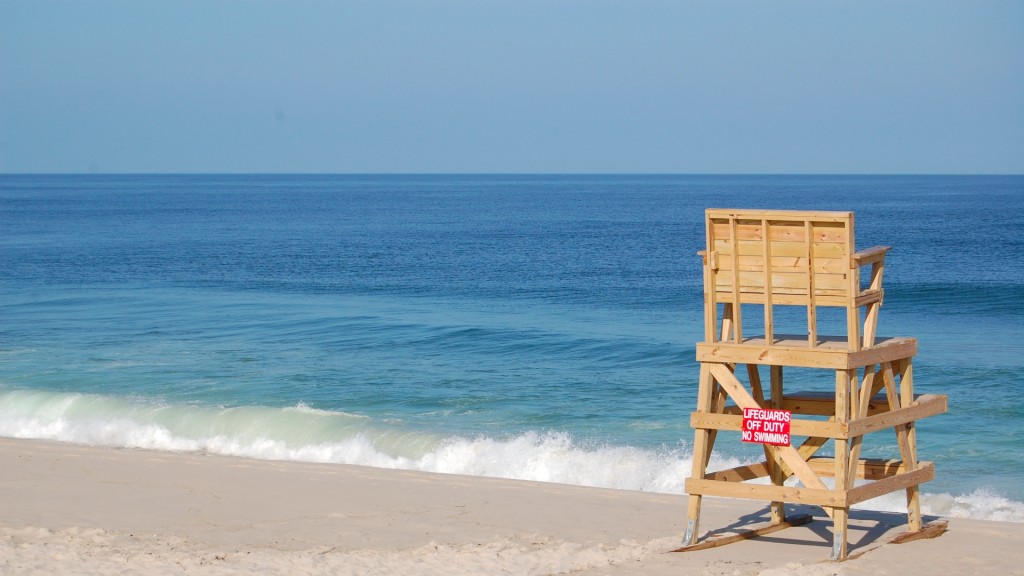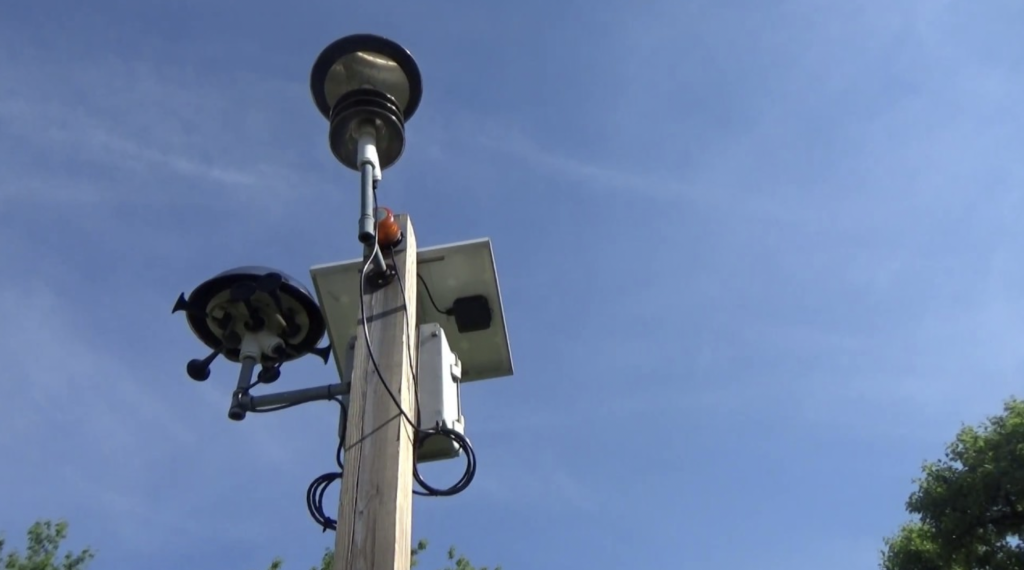
A hazard flag flies at Brick Beach I; the Thor Guard lightning system. (Photos: Daniel Nee / Thor Guard)
The tragic death of a lifeguard in South Seaside Park last summer after being struck by lightning took its toll on the local lifeguard community, with many asking how lightning safety could be improved. In last year’s incident, the fatal strike came despite a mix of clouds and sun, with a storm system having been located well west of Barnegat Bay.
The insidious nature of lightning as a phenomena causes beach supervisors to toe an oft-blurred line between safety and avoiding false alarms when storms fail to materialize. In Brick, last year’s tragedy affected the entire staff of guards, leading officials to brainstorm over the off-season on how things can be improved. While somewhat rare locally, some jurisdictions across the country have turned to lightning detection arrays that produce digital alerts for beach staff when lightning is detected, and an audible siren to warn the public. Brick included the purchase of two such arrays in its capital budget, passed last week by the township council, and expects to have the system operational this summer.
The system Brick is planning to purchase, known as the Thor Guard Detection System, is one of the most robust of its kind. While most systems rely on publicly-available weather radar information to predict the presence of lightning, Brick’s system will come with on-board sensors that can independently detect electrical current at long distances.
|
|
“It’s one of the only kind of systems that detects lightning independently without using radar,” said Dan Santaniello, Brick Township’s recreation director. “At 25 miles away, we might get a yellow light. Once it’s in striking distance, the light turns red and a horn goes off, telling everyone to clear the beach.”
The system is most prominently utilized in Marco Island, Fla., which installed three arrays near its beaches and parks. The technology has also been used on the campus of the University of Tampa to warn students of impending storms, and on golf courses in various locales. Stafford Township is also investing in the system.
The township is planning to purchase two arrays – one for Brick Beach I and one for Brick Beach III. The audible signal can be heard for about one mile, meaning visitors to Beach II, located between the other beaches, as well as those on homeowners’ association beaches within the township will still be able to hear the signal. In Brick, most privately-run beaches utilize township lifeguards and reimburse the cost of their salaries, unifying rescue crews and expanding manpower. The system will link all of the guards together to get the word out about lightning before someone can be struck.
The South Seaside Park incident was both a powerful and tragic demonstration of the dangers of lightning when they may not be obvious to even the most keen observers.
“That storm was 20-something miles away, and there were sunny skies,” said Santaniello. “It’s a hard sell to tell people enjoying a beach day that there’s a storm out there if it doesn’t even seem cloudy – sometimes they think we’re just trying to get out of a day of work, but it takes time to clear the beach.”
Making matters more complicated, some lifeguards found themselves confronted by beachgoers who refused to exit the beach, escalating tensions and taking up precious time to remove equipment before an impending storm.
The arrays will be mounted on poles, with the audio component acting as an “unbiased” warning signal. The system also comes with a digital component.
“There is back-office stuff that we can use in our headquarters, and we can see live radars for the area, check wind speed and the heat index,” Santaniello said. “It will give us a lot of data to help our guards.”
Ultimately, safety will always be the top priority when running the beach, according to officials.
“We’re always trying to keep our residents’ safety first – whether it’s dealing with Covid or going to the beach,” said Santaniello.















